Student Projects |
| | |
| Projects, Master Theses, Papers and other works done by graduate
students affiliated with The Image group at DIKU
(the department of Computer Science at the
University of Copenhagen). |
| | |
Computer Graphics and Animation |
| | |
| | |
| | |
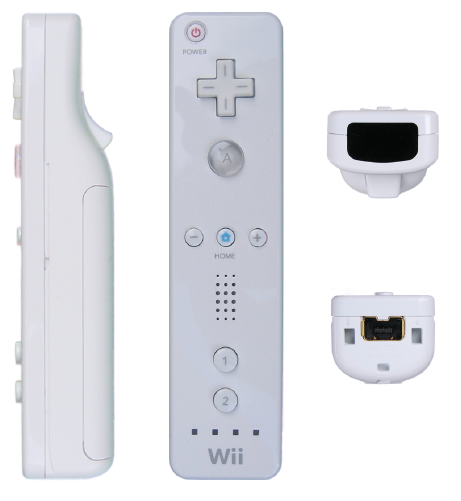
| Jens Peter
Rosenkvist and Kevin Hejn:Headtracking using a Wiimote. April
2008
Graduate Project: By using the infrared camera on the Wiimote
combined with infrared light emitting diodes positioned on the head of
the user, we achieve the effect that the content visible on the monitor
adapts to the position of the head relative to the monitor. Thereby we
achieve the same effect as when looking through a window. See supplementary material and a movie |
| | |
| | |
| | |
| | |
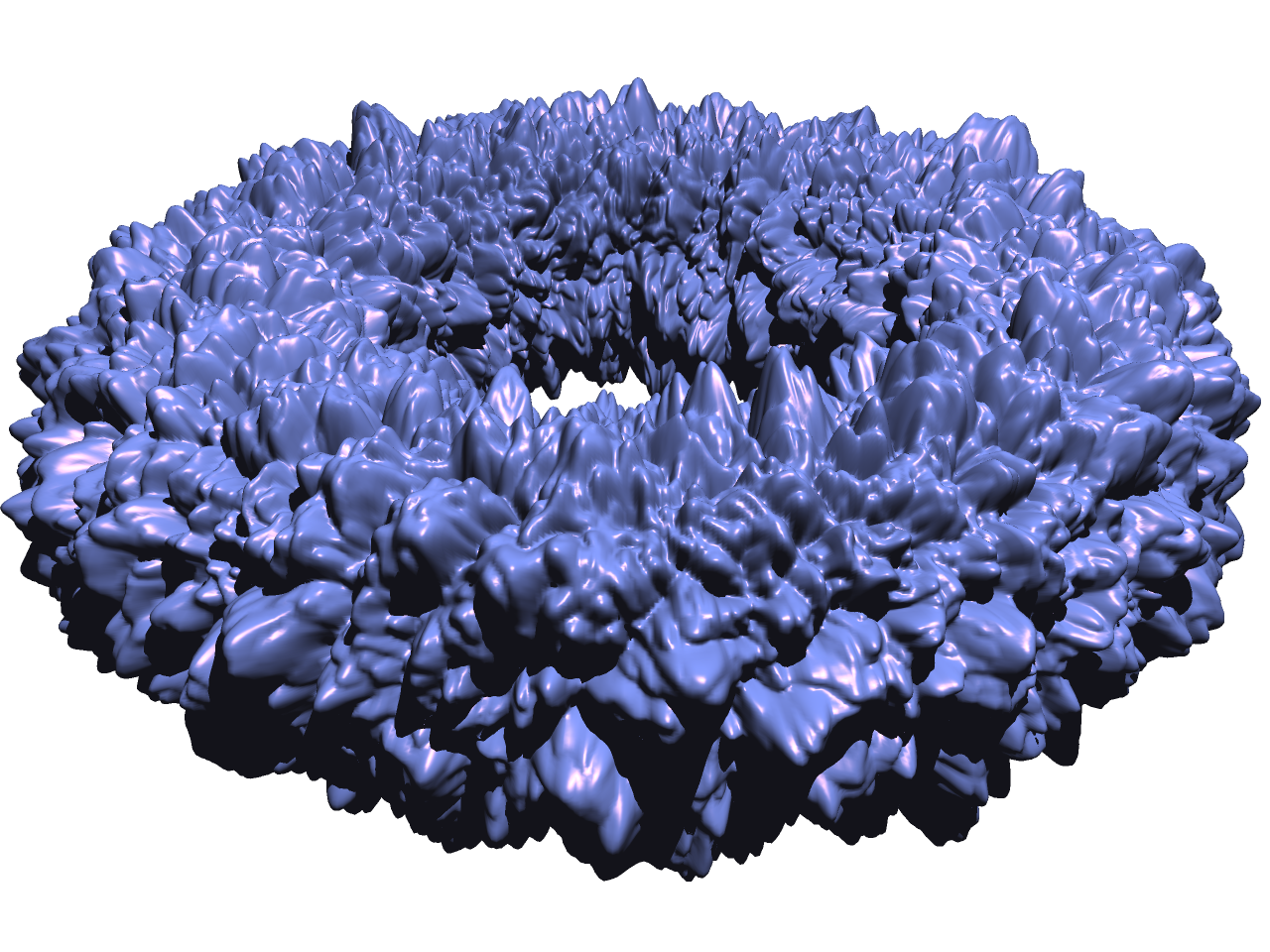
| Morten Mikkelsen:Simulation of Wrinkled Surfaces Revisited. April 2008
Master
Thesis: In this thesis, the work on simulation of wrinkled surfaces by
Jim Blinn is revisited. The Approximations by Blinn is analyzed. Further
a correct method for parameterization of triangular meshes is developed
and normal and bump mapping is presented in a unifying manner. |
| | |
| | |
| | |
| | |
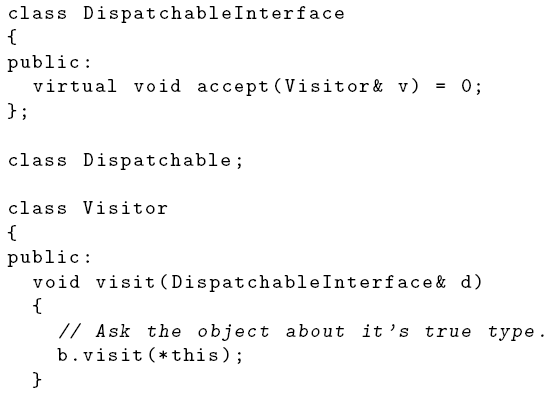
| Martin Parm:Implementing an Efficient Geometry Dispatcher in OpenTissue. March
2008
Graduate Project: In programming we some times need to choose
between several implementations of the same functionality based on the
run-time types of several arguments. This is called Dynamic Multiple
Dispatch. In this project I have explored two methods for approximating
dynamic multiple dispatch in C++ and I have compared their flexibility,
limits and performance. See Supplementary Material. |
| | |
| | |
| | |
| | |
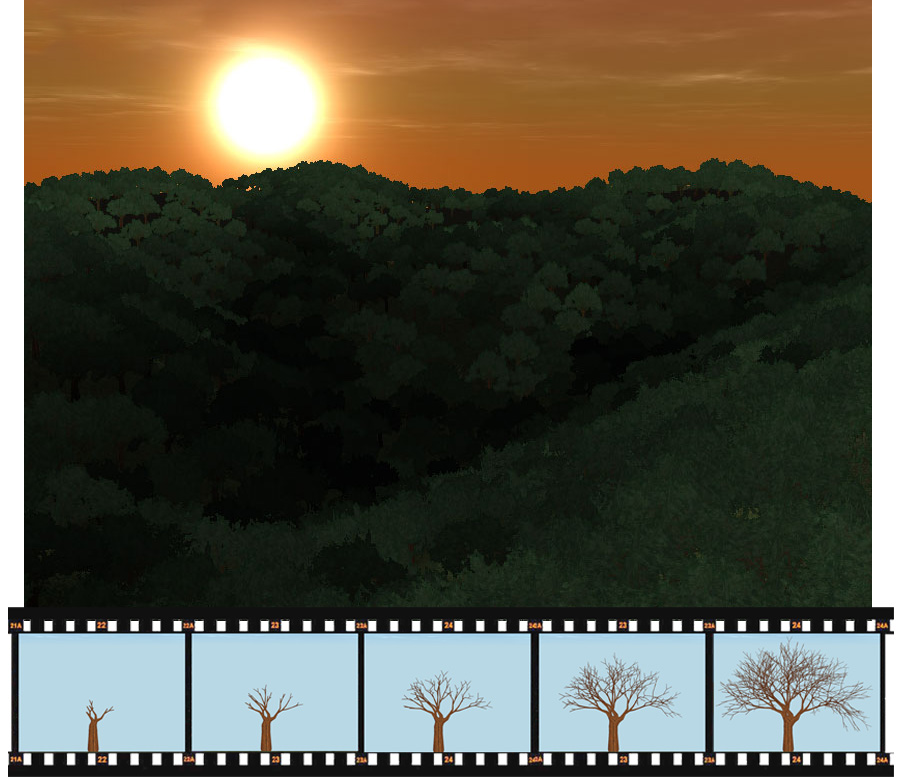
| René Truelsen and
Morten Bonding:Visualizing procedurally generated trees in real time
using multiple levels of detail. January 2008
Graduate Project:
Simulating and rendering vegetation growth. Our aim is to construct a
skeleton based system for growing plants and trees and utilizing ik
solvers for animating the vegetation. By using sliced volume rendering we
hope to obtain an efficient visualization. See home page |
| | |
| | |
| | |
| | |
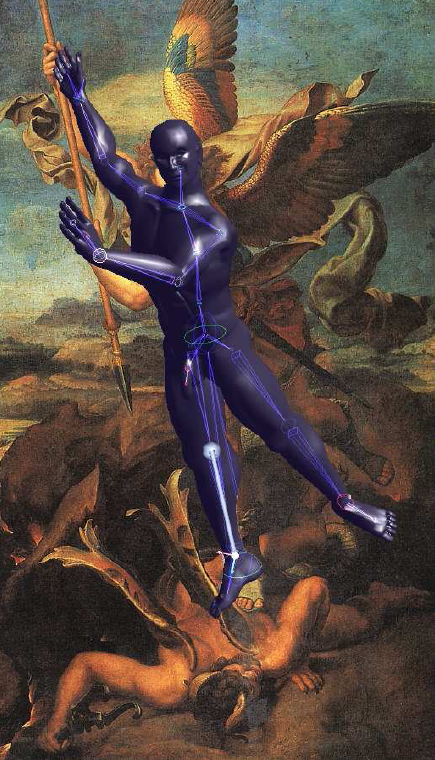
| Morten
Engell-Nørregård:Inverse Kinematics The State of the Art. December
2007
Graduate Project: Three common methods used in inverse
kinematics computation have been chosen as subject for closer inspection.
The three methods are described in some detail. An analysis is performed
where the three methods are compared, and benchmarked against each other.
Source code developed for this project includes the CCD method ,
improvements on the BFGS method and Jacobian inverse method. |
| | |
| | |
| | |
| | |

| Mikkel Adamsen:Rerendering. October 2007
Graduate Project: A rerendering engine
is implemented using the technique of deferred shading. Watch showcase movie. |
| | |
| | |
| | |
| | |

| Frederik Gottlieb:Distance Mesh. June 2007
Graduate Project: A code contribution to the OpenTissue
library is presented. This paper describes both the algorithm and
implementation details towards OpenTissue, where the primary focus is on
library development. A simple demonstration program has been devised, to
suggest that the implementation works as expected and highlight any
difficulties using the developed library code. |
| | |
| | |
| | |
| | |
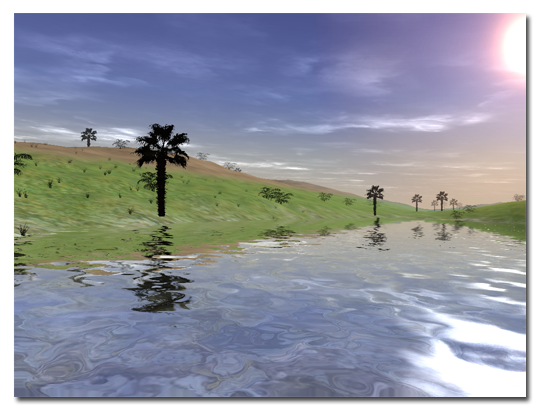
| Rene Truelsen:Real-time Shallow Water Simulation and Environment Mapping and Clouds. April 2007
Graduate Project: This paper focus on how to render a real-time sky/environment and water
simulation using the GPU, The following topics are covered in this paper: An
inexpensive shallow water simulation using bump mapping and uv displacement,
Discussion of skydome vs. skyplane vs. skybox., Multi-layered clouds, and An
inexpensive model for representing atmospheric light scattering. |
| | |
| | |
| | |
| | |
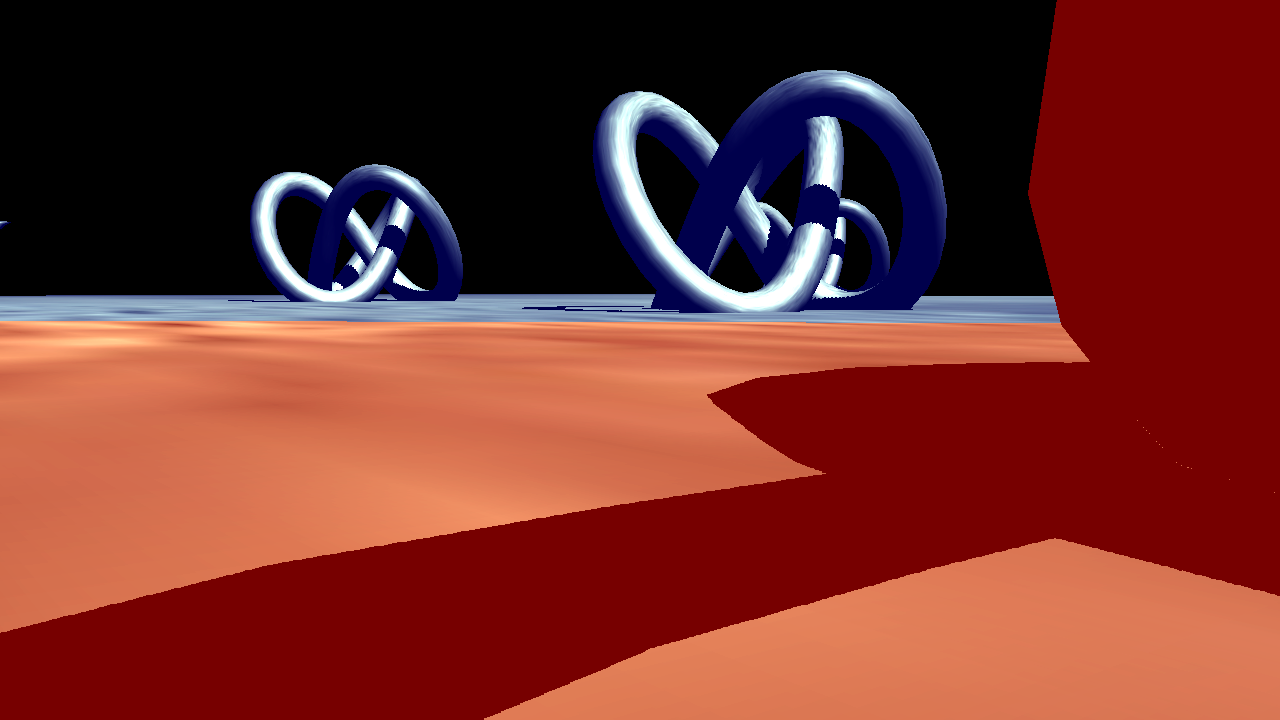
| Morten Mikkelsen:Separating Plane Perspective Shadow Mapping. Marts 2007
Graduate Project: This paper proposes a real-time hybrid solution
between standard shadow mapping and any of the current perspective shadow
mapping based methods. Existing methods are known to have undersampling
problems. At little extra cost we combine two methods to minimize undersampling
errors. |
| | |
| | |
| | |
| | |
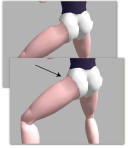
| Kasper Amstrup Andersen:Spherical Blend Skinning on GPU. Marts 2007
Graduate Project: In this paper, we propose a method that enables spherical blend skinning to
run on a GPU with performance comparable to GPU implementations
of linear blend skinning, making spherical blend
skinning a possible choice for many real-time applications
such as computer games. |
| | |
| | |
| | |
| | |
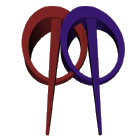
| Jesper Damkjær:Stackless BVH Collision Detection for Physical Simulation. Marts 2007
Graduate Project: This paper proposes a new algorithm for doing collision detection between two
BVHs without using a queue or a stack. This is useful for doing e.g. collision
detection on a Graphics Processing Unit (GPU). |
| | |
| | |
| | |
| | |
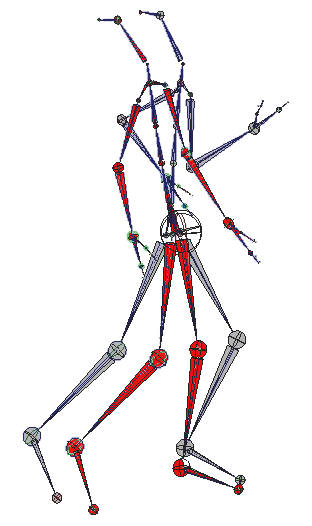
| Kristine Slot:Motion Blending. February 2007
Graduate Project: This project makes a generic approach for blending two motions. We use timewarping to
automatically determine the timing between the two motions and apply alignment of the
motion to control the orientation of the result motion.
The goal of this project is to make a change between two motions seem as realistic as possible
and doing so without any work from an animator. |
| | |
| | |
| | |
| | |

| Henrik Kofod:Implementation of the Finite Volume Method
with diagonalization. February 2007
Graduate Project: An implementation of the Finite Volume Method with diagonalization (FVM) for
physics based animation of deformable objects is outlined. The properties of FVM
method are explored and compared with the finite element method using stiffness
warping. |
| | |
| | |
| | |
| | |
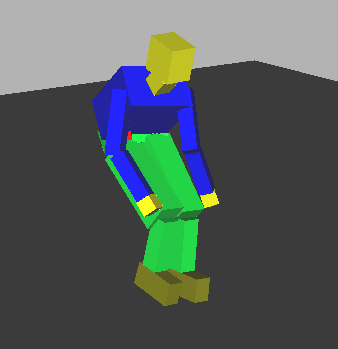
| Stefan Glimberg and Morten Engel:Comparison of Ragdoll Methods. January 2007
Bachelor Project: In this paper we concentrate on the simulation of ragdolls used to animate dead
bodies. A ragdoll is a procedural animation of a 'dead' articulated body,
typically used to make falling bodies look real. The hardware in modern
computers makes it possible to do physics-based computations. In this paper we analyze, implement and compare two different ragdoll
methods. |
| | |
| | |
| | |
| | |
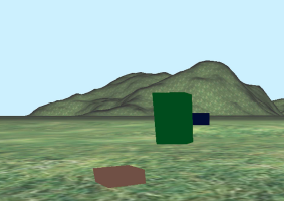
| Andre Tischer Poulsen:Semantic Memory Algorithm. August 2006
Master's thesis |
| | |
| | |
| | |
| | |
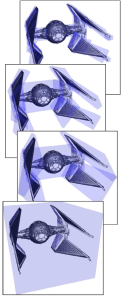
| Kasper A. Andersen and Christian Bay:A survey of algorithms for construction of optimal Heterogeneous Bounding Volume Hierarchies. 2006
In this paper we describe algorithms for automatic object hierarchy
construction. We develop and evaluate a Branch and Bound algorithm. The
algorithm is controlled by a heuristic- and cost function. The hierarchy data
structure built by the algorithm is the Approximating Hybrid Bounding Volume
Hierarchy. It has nodes with varying branching factors, multiple bounding
geometry types and approximating geometries in the leaf nodes. |
| | |
| | |
| | |
| | |

| Klaus Kartou and Thomas Jørgensen:Højdynamisk Lys I Spil Ved Brug Af Programmerbare Grafikkort. 2006
The visual realism in computer games have recently been increased by adding
high-dynamic range lighting effects. In this project the teory and technical
details of immplementation such effects in computer games is outlined,
implemented and tested. In excess we will add other visual effects such as glow
etc.. |
| | |
| | |
| | |
| | |
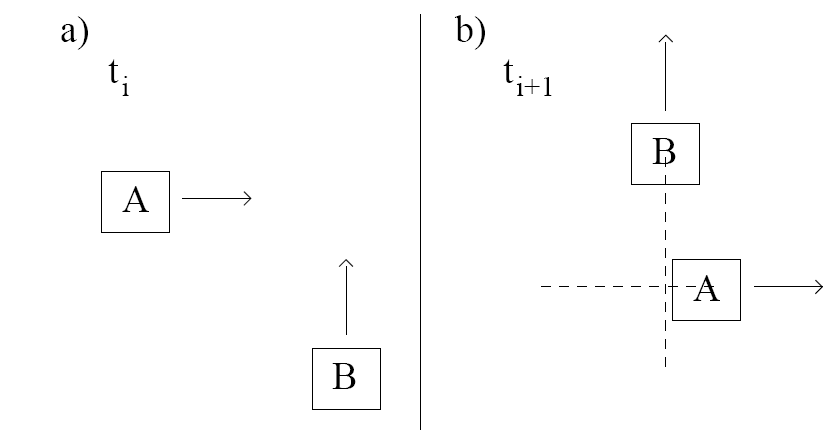
| Jack N. Jørgensen:Kontinuerligt Kollisionsdetektering. 2006
In this work we discuss previous methods on continous collision
detection of rigid bodies. We will use interval arithmetic and hierarchies of
oriented bounding boxes to represent the geometry and motion of the rigid
bodies. We will also provide detailed account for performance and implementation
issues. |
| | |
| | |
| | |
| | |

| Otto I. M. Kirk:Study of a Game Engine for the Nintendo Game Boy Advance. 2006
Have you ever wanted to explore the secret world of game consoles? This
report is all about making a game engine for the handheld game console Game Boy
Advance. With this game engine, it is possible to make simple games, such as
Space Invaders, in a matter of hours; a task that would otherwise take days or
weeks. |
| | |
| | |
| | |
| | |

| Micky Kelager:Lagrangian Fluid Dynamics Using Smoothed Particle Hydrodynamics. 2006
Interactive fluid dynamics is of interest in real-time applications,
such as computer games or virtual surgery simulators. We have implemented a
stable particle-based approach to solve the motion of interactive fluids. With
focus on the simulation part we provide a thorough insight of the mathematical
theory of particle-based fluids. |
| | |
| | |
| | |
| | |

| Kasper A. Andersen and Christian Bay:Effects for a Game Engine. 2006
Our approach introduces an in¯nitely large landscape with constant
framerate and no stalls at runtime. With more computational power, more
resources will be used for dynamic lightning, and natural effects like water. We
present simple and fast shader approaches for both of these effects. |
| | |
| | |
| | |
| | |

| Jonas Drewsen:Generering af planter ved hjælp af omgivelsesfølsomme L-systemer. February 2006
Master's Thesis |
| | |
| | |
| | |
| | |

| Jakob Holck:Dynamisk simulering af artikulerede stive legemer. 2005
In this Master thesis we present the theory of impluse-bsed simulation
of rigid bodies and extend this paradigm with a novel method for handling joint
limits. We show that the new method can be used for interactive applications
such as computer games. |
| | |
| | |
| | |
| | |

| Micky Kelager and Anders Fleron:Area and Volume Restoration in Elastically Deformable Solids. 2004
The classical energy-based model to simulate elastically deformable
solids lacks the ability to prevent the collapsing of solids under influence of
external forces. A thorough explanation is given for the origins of
instabilities, and extensions that solve the issues are proposed to the physical
model. The improved model is suitable for interactive simulation. |
| | |
| | |
| | |
| | |
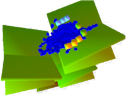
| Niels Boldt:A Paradigm for Simulating Rigid, Deformable and Liquid Bodies. 2004
In this Master thesis, we present a particle based method to
simulate rigid-, deformable- and liquid-bodies together.
We present physical models for the mentioned bodies, that
can interact through forces or projections. Using forces
our method resembles a penalty based simulator, while it
resembles a constraint based simulator, when projections are
used to model interactions. |
| | |
| | |
| | |
| | |
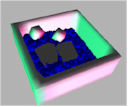
| Niels Boldt:Simulation of Liquid, Deformable and Rigid Bodies. 2004
Realistic interaction between rigid-, deformable- and liquid-bodies can
add an substantial realism in interactive applications. We propose a particle
based method. Compared to previous methods our method uses the same geometrical
representation for all objects which makes collision detection and interaction
particular simple. |
| | |
| | |
| | |
| | |

| Marinus Rørbech:Real-time Simulation of Smoke using Graphics Hardware. 2004
We implement a 3D fluid solver. The solver is implemented in fragment
shaders running entirely on the Graphic Processing Unit (GPU) of a modern
graphics card. We present a simple visualization approach for rendering
high-quality smoke animations in real-time. Finally, to handle interaction
between fluid and stationary objects, we present a simple method for setting
boundary conditions. |
| | |
| | |
| | |
| | |

| Marinus Rørbech:Real-time Simulation of 3D-Fluid using Graphics Hardware. 2004
In this Master thesis we focus on real-ime simulation of 3D fluid using
graphics hardware. |
| | |
| | |
| | |
| | |
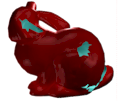
| Jonas Meyer and Niels Boldt:Self-intersections with Cullide. 2004
We present an image-space technique for detecting intersections and
self-intersections among multiple moving and deforming objects. No preprocessing
is needed and the shape of the objects are unconstrained and can be an
arbitrarily polygon soup. Compared to other algorithms running on graphics
hardware the algorithm make modest use of bandwidth between the CPU and GPU. |
| | |
| | |
| | |
| | |
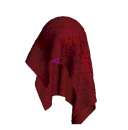
| Micky Kelager and Anders Fleron:Implementation of Deformable Objects. 2004
We have successfully implemented the method of elastically deformable models
presented by Terzopoulos et al. in 1987. Our implementation runs interactively,
even with high particle concentrations. The implementation is
compared against a fast relaxation based particle system, and not only exhibits
a more realistic behavior of deformation, but also makes a tough competitor
regarding performance. |
| | |
| | |
| | |
| | |
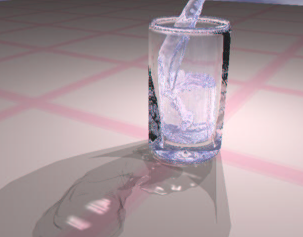
| Jens Egeblad, Michael Gram Haagensen, and Marinus Rørbech:En adaptiv model til animering af væsker. November 2002
Student Project |
| | |
| | |
| | |
| | |

| Erik B. Dam and Martin Koch and Martin Lillholm:Quaternions, Interpolation and Animation. 1998
The main topics of this technical report are quaternions, their
mathematical properties and how they can be used to rotate objects. We
introduce quaternion mathematics and discuss why quaternions are a
better choice for implementing rotations than the well-known matrix
implementations. We then treat different methods for interpolation between
series of rotations. |
| | |
| | |
| | |
| | |

| Theo Engell-Nielsen and Søren Traunter Madsen:Modelling, Animation, and Visualisation of Fire. 1999
The art of reproducing natural phenomena in computer graphics
is said to be among the most difficult. The complexities of the
phenomena take us to the boundaries of human cognition, computational
complexity and computer memory usage. Fire is one of these phenomena,
and perhaps one of the most difficult to grasp and therefore very
hard to visualize. |
| | |
| | |